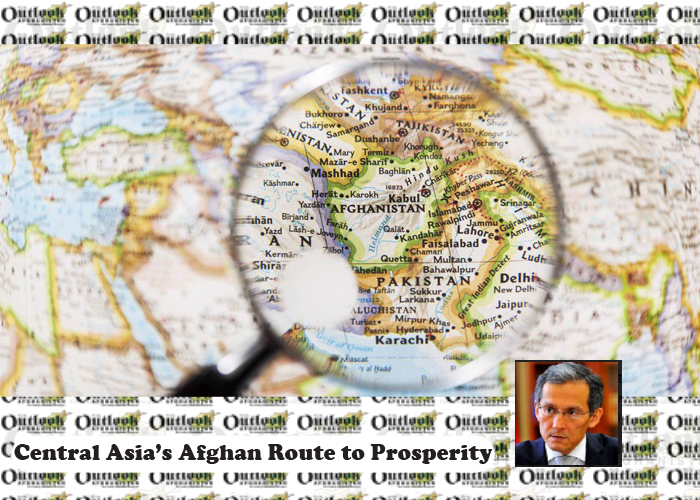For the first time in centuries, there is an opportunity to connect Central and South Asia via modern transport and energy corridors through Afghanistan. Once completed, these projects would transform Eurasian security, significantly increase regional economic activity, and potentially bring peace at last to Afghanistan. They may even revive the Great Silk Road.
Progress on the planned schemes should therefore interest the region’s influential neighbors – Russia, China, and India – and the United States, which has spent at least $2 trillion in Afghanistan over the last 20 years. But most of the world regards Central Asia as terra incognita, and has so far paid little attention to significant recent developments.
In February, for example, Uzbek Foreign Minister Abdulaziz Kamilov visited three Central Asian countries – Kazakhstan, Turkmenistan, and Tajikistan – to secure their support for transport projects with Afghanistan and South Asian countries. Kamilov was traveling at the behest of Uzbek President Shavkat Mirziyoyev, who, in his December 29 message to the country’s parliament, highlighted cooperation with South Asia and promotion of peace in Afghanistan as his main regional priorities.
Specifically, the talks were about construction of the “Kabul Corridor” railway from Termez in Uzbekistan to the Pakistani city of Peshawar via Mazar-i-Sharif and Kabul in Afghanistan. The railway could transport up to 20 million tons of cargo per year, and the section from Termez to Mazar-i-Sharif, built by Uzbekistan, is already operational. The remaining 573-kilometer (356-mile) stretch to Peshawar will have to cross the Hindu Kush mountain range, where the passes are more than 3,500 meters (11,483 feet) above sea level, making it one of the world’s highest mountain railways.
The section of the railway from Mazar-i-Sharif to Kabul, at a preliminary estimated cost of $5 billion, will be built mainly with borrowed funds. In late December, Uzbekistan, Afghanistan, and Pakistan jointly appealed to international financial institutions to support the project. Subject to financing, construction could begin in September this year.
The existing highway between Mazar-i-Sharif and Kabul will ensure the delivery of equipment and construction materials, while Uzbekistan and Tajikistan’s power lines to the Afghan capital run along the same route, making it possible to electrify the rail link.
In Peshawar, the railway will connect arriving trains with the Pakistani transport system, thereby linking the Central Asian and Eurasian railway networks to those of South Asia and providing access to the Pakistani ports of Karachi, Qasim, and Gwadar. It is estimated that the new railway will reduce goods transportation times from Central Asia to Pakistan from 30 days to 15 and cut transportation costs by 30-35%.
The apparent reason for giving access to Pakistani ports priority over other options is that the Mazar-i-Sharif-Kabul-Peshawar route is the shortest one. But there is a more important one: the Kabul Corridor, together with the China-Kyrgyzstan-Uzbekistan transport corridor, will connect four economically powerful Eurasian regions – Europe, China, Russia, and South Asia – via Central Asia.
Today, the main transport route from Central Asia to the southern seas, through the Iranian port of Bandar Abbas, is no longer considered the most attractive. Economists calculate that transporting a container from Tashkent, the Uzbek capital, to Karachi would cost approximately $1,400-1,600, about half the price of transporting it from Tashkent to Bandar Abbas ($2,600-3,000). Besides, international economic sanctions against Iran will complicate any projects there.
At the end of 2020, construction began on the Afghan section of another mega-project linking Central and South Asia: the TAPI gas pipeline, named after the four countries through which it will pass – Turkmenistan, Afghanistan, Pakistan, and India. The 1,814-kilometer pipeline will run from the Galkynysh gas field in Turkmenistan to the Indian city of Fazilka via Herat and Kandahar in Afghanistan and the Pakistani cities of Quetta and Multan. It will have a capacity of 33 billion cubic meters of gas per year and cost an estimated $8-10 billion.
Although security concerns have long cast doubt on the TAPI pipeline’s viability, completion is now scheduled for December 2023. Crucially, a high-ranking Taliban delegation visited Turkmenistan on February 6, promising to support the project. There are indications that the US, which has long backed the pipeline, may have facilitated the trip.
Central Asia has always been a politically sensitive region, part of what former US National Security Adviser Zbigniew Brzezinski called the “grand chessboard.” When implementing such large projects, therefore, one should consider the geopolitical positions of major regional players such as America, Russia, and China. But for now at least, it appears that everyone has an interest in Central Asia and Afghanistan being economically dynamic and politically stable, rather than poor and a source of conflict.
For all the importance of new landmark projects, further Central Asian cooperation is essential. Historically, the region has prospered most when it acts as a “crossroads civilization,” channeling and transforming Eurasian trade, and economic and cultural forces. In fact, Central Asia became a world leader in economic development, trade, technology, manufacturing, and intellectual life during the period referred to as its golden age, when it was open, dynamic, and willing and able to learn and adapt from others.There is no reason why Central Asia cannot succeed again. Practicing a form of open regionalism, Central Asians found many reasons to cooperate over several centuries. A return to that role would be good news for the entire world – and deserving of its leaders’ attention.
Home » Opinion » Central Asia’s Afghan Route to Prosperity
Central Asia’s Afghan Route to Prosperity
| Djoomart Otorbaev

